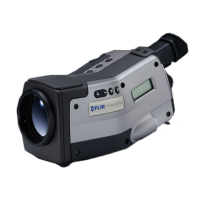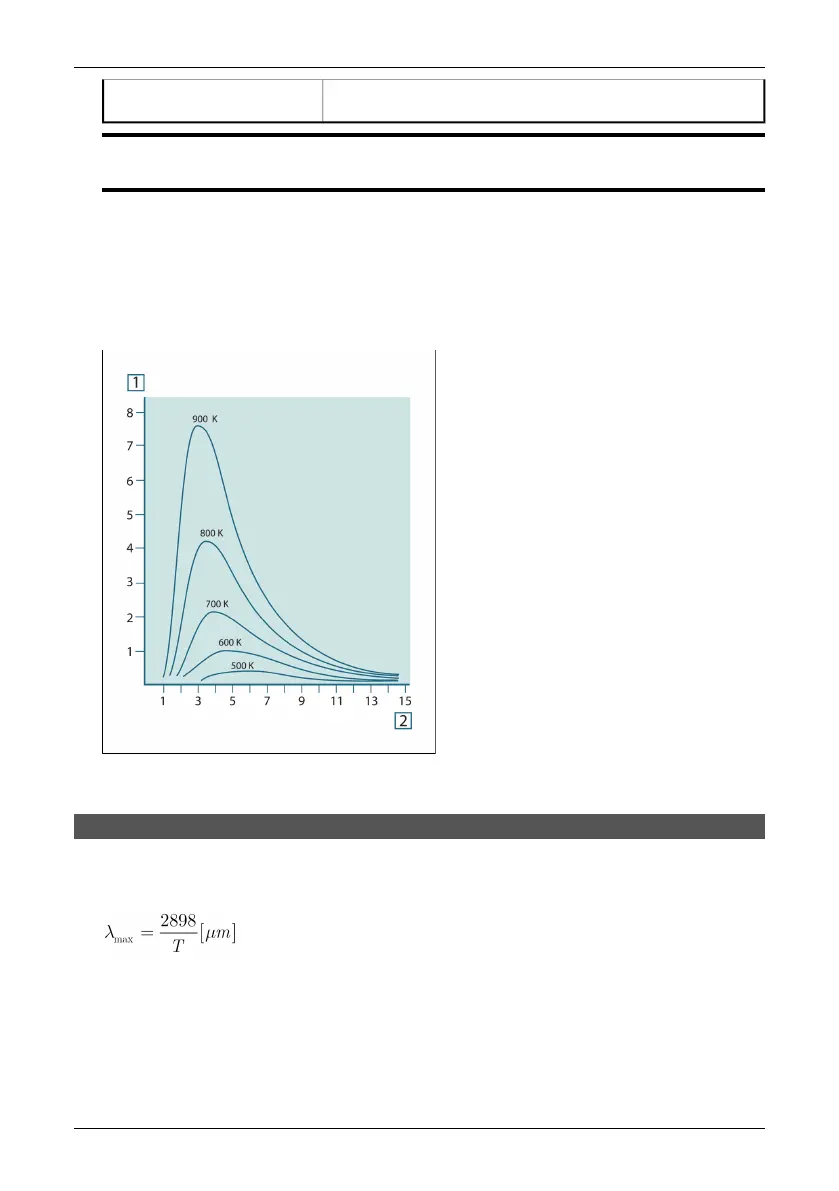Wavelength (μm).
λ
NOTE: The factor 10
-6
is used since spectral emittance in the curves is expressed in Watt/m
2
m. If the
factor is excluded, the dimension will be Watt/m
2
μm.
Planck’s formula, when plotted graphically for various temperatures, produces a
family of curves. Following any particular Planck curve, the spectral emittance is
zero at λ = 0, then increases rapidly to a maximum at a wavelength λ
max
and after
passing it approaches zero again at very long wavelengths. The higher the tem-
perature, the shorter the wavelength at which maximum occurs.
10327103;3
Figure 18.4 Blackbody spectral radiant emittance according to Planck’s law, plotted for various absolute
temperatures. 1: Spectral radiant emittance (W/cm
2
× 10
3
(μm)); 2: Wavelength (μm)
18.3.2 Wien’s displacement law
By differentiating Planck’s formula with respect to λ, and finding the maximum,
we have:
This is Wien’s formula (after Wilhelm Wien, 1864–1928), which expresses mathe-
matically the common observation that colors vary from red to orange or yellow
as the temperature of a thermal radiator increases. The wavelength of the color
is the same as the wavelength calculated for λ
max
. A good approximation of the
value of λ
max
for a given blackbody temperature is obtained by applying the rule-
90 Publ. No. 1 557 536 Rev. a35 – ENGLISH (EN) – January 20, 2004
18.3 – Blackbody radiation

